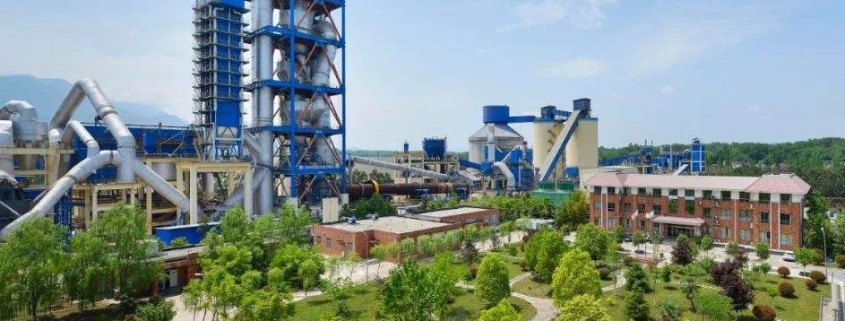According to the survey results of the Ministry of Health, the amount of garbage generated in rural areas can reach 0.86 kg per person per day, 300 million tons per year, and the garbage pollution situation in China’s towns is very severe. Recently, the coordinated disposal of garbage through cement kilns has received widespread attention in the cement industry. In the face of inadequate rural management systems, most townships have insufficient funds, and the township domestic garbage cannot be effectively treated. The advantages are obvious. At present, the pollution pattern of township garbage is increasing towards the total amount of pollution, and the sources of pollution are complex and diverse, which seriously endangers the ecological environment safety and residents’ health.
At present, the main treatment methods of domestic garbage in most villages and towns are open storage, composting and incineration. Due to the lack of reasonable scientific and technical guidance, these treatment measures may cause secondary pollution and fail to achieve the purpose of fundamental treatment. Although a few villages and towns have built landfill sites or incineration plants, they are small in scale and constrained by factors such as funding, management level, and human resources, and ultimately cannot be used to “detoxify” domestic waste. In recent years, various experts and scholars have put their hopes on the treatment and disposal of domestic waste in the cement industry, that is, using the new dry cement kiln with high process temperature, large heat capacity, alkaline atmosphere, negative pressure environment, and no ash and other natural advantages This method has great prospects for the disposal of domestic garbage.
The use of cement kilns to co-process waste has broken through the field of waste treatment systems and established a new domestic waste treatment model. A variety of technologies have been developed at home and abroad for the use of cement kilns to co-process domestic waste:
1. Hot plate furnace mode
A process for setting up an online waste incinerator in a cement kiln system to dispose of domestic waste, that is, using three winds and part of the hot raw materials as a heat source to incinerate domestic waste, and the flue gas and slag generated during the return to the clinker for burning Further disposal in the system.
2.CKK mode
The CKK (Conch Kawasaki Kiln System) mode is a process for parallelly setting up a waste incineration and gasification furnace outside the cement kiln system to dispose of municipal solid waste, that is, using the tertiary air of the kiln system as the main heat source, Incineration, and the incinerated flue gas and slag are introduced into the kiln system for disposal.
3.RDF mode
The RDF (Refuse derived fuel) mode is to build a special domestic waste pretreatment plant to crush, ferment, dry, and sort a series of mixed domestic waste to make an alternative fuel for the cement industry to consume A process of domestic garbage.
The above three models have better adaptability to large amount of investment, large amount of domestic garbage, and better classification and collection of urban domestic garbage. However, the waste disposal cost of the CKK mode is relatively large; the RDF mode and the hot-plate furnace mode have a great transformation effect on the kiln.
Due to the decentralized characteristics of villages and towns, the above model is not suitable for the treatment of villages and towns. Aiming at the domestic garbage of villages and towns, and relying on the technical basis of the new dry-process cement kiln production line, related research proposes a simple mode of co-processing of village and town domestic garbage with cement kiln. This model requires simple pretreatment process of village and town domestic garbage, less transformation of cement kiln, low processing cost, and solves the difficult problem of garbage sorting. The treated domestic garbage meets the requirements of “reduction, harmlessness, and recycling”.
At present, many cities in China and surrounding areas basically have new dry-process cement production lines. Without affecting cement production and product quality, each ton of cement clinker produced can coordinately process 0.06-0.15 tons of domestic waste. China currently has about 1.8 billion tons of new-type dry-process cement clinker production capacity. If all of the domestic garbage can be disposed of collaboratively, more than 110 million tons of domestic garbage can be disposed of annually, and most of the domestic garbage discharged each year can be disposed of. The simple model of cement kiln co-processing village and town domestic garbage has certain reference significance to villages and towns with a small amount of garbage collection and insufficient financial funds.



